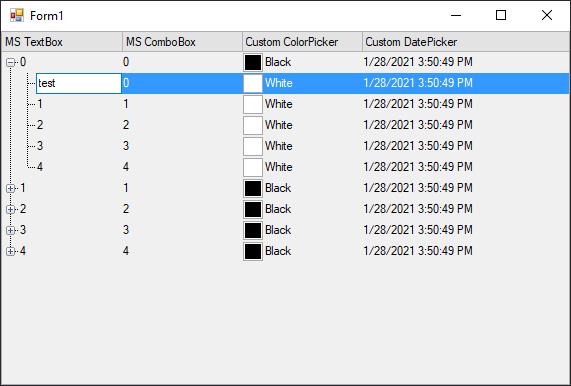

$childNode = Add-Node $parentNode $_. $parentNode = Add-Node $script:cmdletNodes $_ “Module” TreeView.SelectedNode Property () Gets or sets the tree node that is currently selected in the tree view control. $script:cmdletNodes.text = “PowerShell Help” How to: Add Custom Information to a TreeView or ListView Control (Windows Forms) Recommended content TreeNodeCollection.Add Method () Adds a new tree node to the collection.
#Winforms treeview code
The following section of code shows the function we created to build the Windows PowerShell help tree: To build the Windows PowerShell help tree, we create a function and add it to the Form Load event- $form1.Add_Load(). TreeView Control Overview Explains what the control is and its key features and properties. Now, we need to build the tree and show it as the form loads. The Windows Forms TreeView control displays a hierarchy of nodes, like the way files and folders are displayed in the left pane of the Windows Explorer feature in Windows operating systems. After this instance is created, we assign values to properties such as size, name, and various other properties. We use the namespace to create an instance as $treeView1. $treeView1.Location = $System_Drawing_Point The following snippet shows the code generated by PrimalForms to add the TreeView control to the main form:

Now, we need to edit this script to add the custom code we need to create our process manager: This generates the necessary code to create the GUI form in Windows PowerShell. The intention of this form is to load the Windows PowerShell help for all Windows PowerShell core modules in the form of a tree, and when you select a cmdlet within the tree, help text for that cmdlet will be shown in the text box along with a link to a TechNet article at the bottom of the form.Īfter the design is complete, we export the form to a Windows PowerShell script using Export PowerShell option. This is seen in the image following this paragraph. I placed the TreeView control, a rich text box, a link label, and a button. I will explain this by showing an example of a Windows PowerShell help tree.įirst, we design a simple GUI form using SAPIEN’s PrimalForms Community Edition.
#Winforms treeview how to
In today’s post, we will see an example of how to use Windows Forms TreeView control. He is also moderator on the Official Hey, Scripting Guy! Forum and a regular speaker at BangaloreITPro User Group meetings. He writes regularly on his blog about topics related to Windows PowerShell, SharePoint, and Microsoft server virtualization. He loves automation and is a Windows PowerShell fanatic. Today we have a guest article by Ravikanth who works at Dell, Inc., as a lead engineer in the SharePoint Solutions Team.


 0 kommentar(er)
0 kommentar(er)
